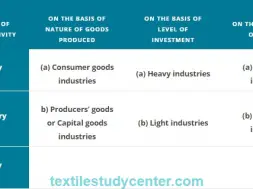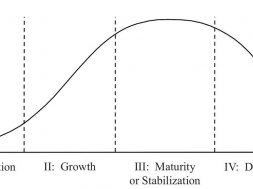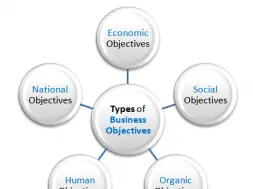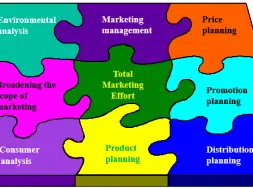
Nature & Scope of Business | Part 03
Nature & Scope of Business | | Part 01 | | Part 02 | | Part 03
Nature & Scope of Business | Classification of Business Activities | Classification of Manufacturing industries
Classification of Business Activities:
Business activities are undertaken to satisfy human wants by producing goods or rendering services. We may classify business activities on the basis of functions into two broad categories:
(a) Industry and
(b) Commerce.
Industry:
Industry is concerned with the production and processing of goods. This type of business units is called ‘industrial enterprises’ which produce consumer goods as well as machinery and equipments.
Commerce:
commerce includes all those activities which are necessary for the storage and distribution of goods. Such units are called ‘commercial enterprises’ which include trading and service activities like transport, banking, insurance and warehousing.
Classification of business activities:
various types of business activities that usually take place in an economy.
Some of these are:
- Extraction of oil, natural gas or minerals;
- Manufacturing of commodities (consumer’s goods);
- Buying of goods from one place/country and selling it at different place/country (both consumers & capital good’s);
- Construction of buildings, roads, and bridges etc.
- Providing services like ticketing, warehousing, transportation, banking, insurance etc.
Industry:
Industry primarily refers to all such business activities concerned with production/raising or processing of goods and services. It processes raw materials or semi-finished goods into finished goods. Extracting raw materials from earth’s surface, manufacturing goods and commodities, producing crops, fish, flowers, constructing buildings, dams, roads etc. are all examples of industry. These activities are called industrial activities and the units engaged in these activities are known as industrial enterprises. However, n a broader sense, provision of services like banking, insurance, transport also form part of industries known as tertiary industries.
Classification of Industries:
Before classifying industry on the basis of nature of activity, let us have a broad idea of different approaches of its classification.
|
On the basis of nature of activity |
On the basis of nature of goods produced |
On the basis of level of investment |
On the basis of size of activity |
|
(a) Primary industries |
(a) Consumer goods industries |
(a) Heavy industries |
(a) Small scale industries |
|
(b) Secondary industries |
b) Producers’ goods or Capital goods industries |
(b) Light industries |
(b) Large Scale industries |
|
(c) Tertiary industries |
|
|
|
(a) Primary industries:
Primary industries refer to the activities of extraction of natural resources like coal, oil, minerals etc. and reproduction and development of living organisms like plants and animals etc. Primary industries can be categorized as extractive and genetic industries. ONGC is a company that extracts oil and natural gas from earth. Similarly farmers growing crops, business houses engaged in extracting raw materials/minerals from earth (coal-mines, iron-ore mines etc.), extracting materials from forest for further processing (like collecting natural honey, timber etc.), extracting items from sea/river (like fish, crab, prawn, sea foods etc.). All these are examples of extractive industries.
Poultry farms, or apple orchards or nurseries are industries engaged in rearing and breeding animals and birds and growing plants or flowers for sale and are known as genetic industries. Now-a-days genetic industries are growing in number which include Horticulture (growing fruits and vegetables), Floriculture (growing flowers), Dairy Farming, Poultry Farming, Pisiculture (breeding fish) etc.
(b) Secondary industries:
The secondary industry that uses the products of primary industry as its raw materials to produce a variety of finished goods. The activities of secondary industries may be of manufacturing or construction. Manufacturing industries are engaged in producing finished goods out of raw materials or semi-finished products. For example, cotton is used to produce textile, timber to produce furniture, bauxite to produce alumina. The industries engaged in erection of buildings, dams, bridges, roadways, railways, canals, tunnels etc. are known as construction industries. They make use of the products of other industries and construct different types of structures as per the requirements of the customers.
Manufacturing industries may be divided further into the following categories:
(i)Analytical Industries manufacture different types of products by analyzing and separating different elements from the same product. Petrol, diesel, kerosene, lubricating oil etc. are produced from the crude oil in oil refinery industry.
(ii) Synthetic Industries put together various ingredients and manufacture a new product. For instance, soap is produced by combining potassium carbonate and vegetable oil. Similarly, cement is produced by using limestone, coal and other chemicals.
(iii) Processing Industries are those in which raw materials are processed through successive stages to get the final products. Textile, sugar and paper are the examples of processing industry.
(iv) Assembling Industries put together various manufactured products and make a new product as in the case of car, scooter, bicycle, radio and television etc.
(c) Tertiary industries These industries are basically concerned with generating or processing of various services and facilitate the functioning of primary industries and secondary industries as well as activities of trade. These include service industries like banking, insurance, transport etc. Film industry which provides entertainment to the individuals produces films; tourism industry which provides services to the individual by facilitating their travel, booking of tickets and hotel rooms etc. are also included in this category.
Nature & Scope of Business | | Part 01 | | Part 02 | | Part 03
(986)








